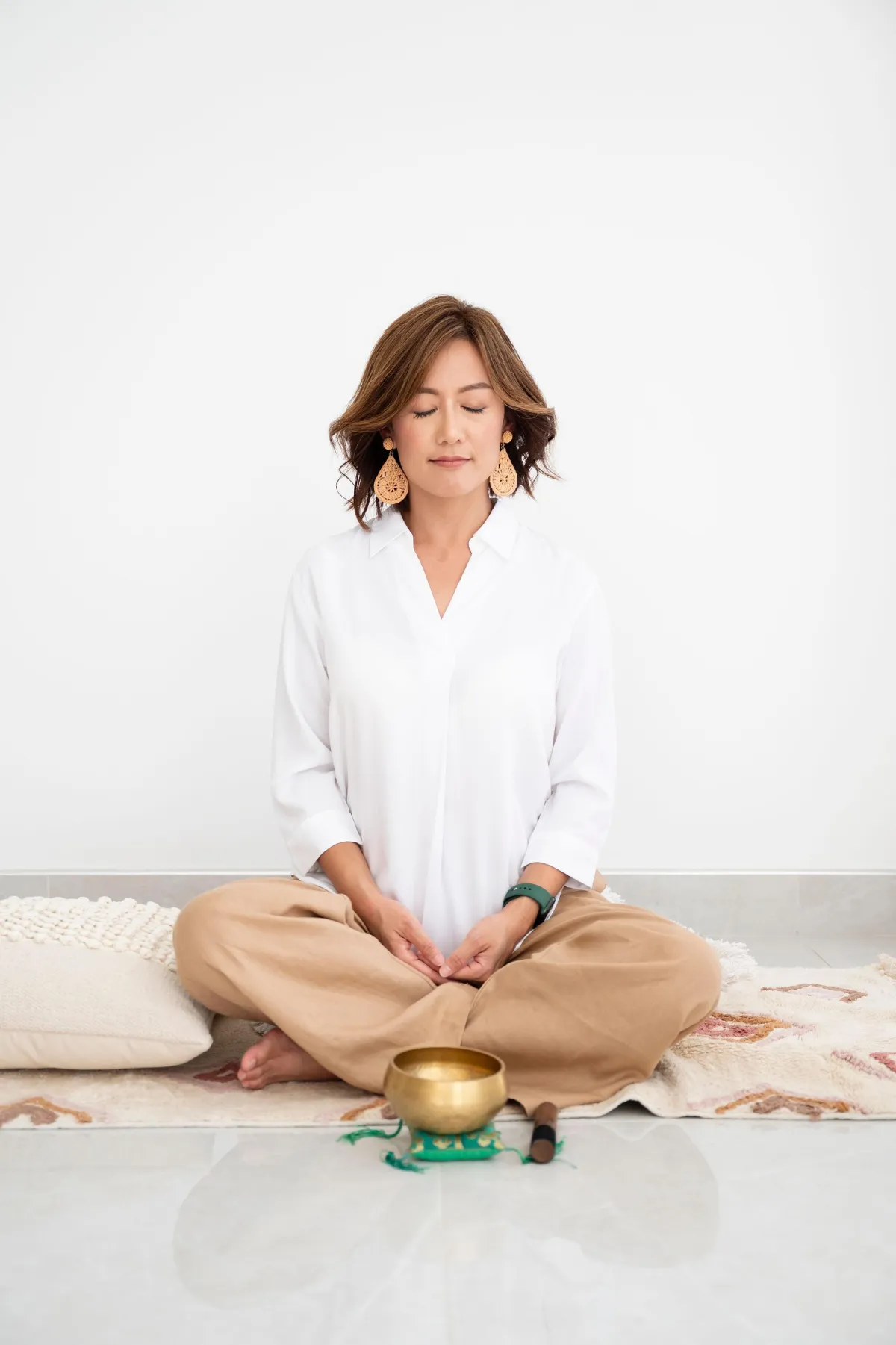
The Inner Sanctuary: Where Buddhist Wisdom Meets Therapeutic Practice
When Professional Dedication Meets Personal Depletion
Several years into my Buddhist practice, while deeply immersed in frontline mental health work, juggling work and parenting, I found myself running on empty. The weight of holding space for others' trauma, grief, and pain was becoming overwhelming. One evening, after a particularly heavy day of back-to-back crisis sessions, my mind was ruminating over the sessions, and I could feel myself carrying the weight of emotions as I interacted with my husband and children. I sat in meditation that night – not out of discipline, but pure desperation.
The Moment of Clarity
In that moment of stillness, something shifted. As my breathing settled, I began to recognize the familiar landscape of my inner world: the chattering mind filled with self-doubt, the constriction of fear in my chest, the heavy blanket of exhaustion draped over my shoulders. But this time, instead of trying to push these experiences away or overcome them through sheer will, I simply sat with them. I realized I couldn't run from these feelings.
The Path to Liberation
As I continued to observe with clarity, I recognized the turmoil that I was holding onto, this ego's clinging, this "I" that was in pain because of how I took all the mental images in my mind as 'real.' I met those stories of self-doubt with kindness, released that tension slowly and let them subside into open spaciousness. The bubbles of illusory emotional pain burst and I returned to that boundless openness state. In that state of knowing, I recognized my mind was in pain and suffering. In that moment, I was met with warm loving-kindness and compassion, extending that to myself internally. There's also this knowing that "I," together with other beings, are subject to this pain and suffering day in, day out. Yes, it is a ceaseless cycle. Hence why it's so important that I continue to be on this path to practice recognizing the internal turmoil for what it is and know ways to liberate from it.
Understanding the Bodhisattva Path
This revelation illuminated a profound truth about the path of a Bodhisattva: we don't retreat from the world's suffering; we walk directly into it with an open heart and skillful hands, for the benefit of all beings. Bodhisattva practitioners aspire to not just liberate themselves but to work for collective awakening and liberation of others' suffering. A bodhisattva practitioner continues to observe within with pristine awareness and truly understand the nature of the clinging mind and how this will create pain that seems so real.
Beyond Personal Liberation
Maintaining their clear knowing through these experiences, they realize their own true nature and find ease no matter what they experience. This clear knowing allows them to not cling onto their emotional experience. In fact, without these experiences they would not have gained their profound wisdom. Unlike smaller vehicle practitioners who may only seek their personal liberation, bodhisattva practitioners realize that simply meditating in the mountains and forests to find peace may only be half of the cultivation but unable to attain true liberation. Experiencing these ups and downs in our lives enhances our capacity for enlightenment. Practicing the bodhisattva path actually allows practitioners to have this fearless courage and open heart to learn ways to alleviate suffering for the world through experience.
The Integration of Practice and Profession
My meditation practice wasn't meant to be an escape from the emotional intensity of therapeutic work – it was the essential training ground for it. In Buddhism, the self-doubt, the narratives in our mind are like seeds that were planted in the past, by witnessing them and allowing them to 'sprout' and 'let go' so that you continue to cultivate this inner clarity essential for awakening.
Finding Sustainable Presence
The stillness I cultivated on my cushion became my anchor in crisis situations. The self-compassion I practiced during challenging sits became the wellspring from which I could genuinely offer compassion to others. When my inner critic's voice grows too loud, depleting my energy, how can I possibly offer authentic presence to my clients? Our ability to notice our inner landscape and relate to ourselves with kindness isn't just a nice addition to our therapeutic toolkit – it's fundamental to sustainable practice.
The Nature of True Compassion
True compassion, I've discovered, carries a fearless quality. It doesn't shy away from the heaviness of emotional holding or the deep pain we encounter within ourselves and our clients. Instead, it provides the stable ground from which we can meet whatever arises with presence and skill.
Transformation Through Integration
This integration of Buddhist wisdom and therapeutic practice didn't just prevent my burnout – it transformed my entire approach to therapy. The techniques and modalities we learn are important, but they come alive through the quality of presence we bring to them. This presence isn't something we can fake or force; it emerges naturally from our own deep practice and self-understanding.
An Invitation to Fellow Therapists
It's this transformative integration that I feel called to share with fellow therapists. In the Bodhi Meditation Circle, we explore how ancient Buddhist wisdom can enhance our therapeutic presence and sustain us in this challenging but sacred work. We learn to cultivate not just techniques, but the inner sanctuary that allows us to show up fully for ourselves and our clients.
Ready to explore how Buddhist wisdom can transform your therapeutic practice? Join my free 3-video series "Buddhist Wisdom in the Therapy Room." Sign up now to begin your journey.
